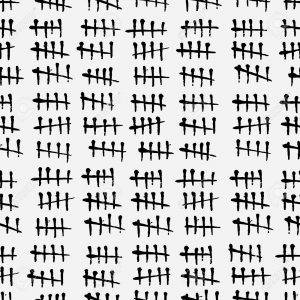
Before we start, a story about Joe DiMaggio.
He is best known for his remarkable hitting streak during the 1941 season when he recorded a hit in fifty-six consecutive games—a record that still stands more than seventy-five years later.
As the story goes, a journalist was interviewing DiMaggio at his home and asked him what it felt like to be such a “natural hitter.” Without saying a word, he dragged the reporter downstairs. In the shadows of the basement, DiMaggio picked up a bat and began to repeat a series of practice swings. Before each swing, he would call out a particular pitch such as “fastball, low and away” or “slider, inside” and adjust his approach accordingly.
Once he finished the routine, DiMaggio set the bat down, picked up a piece of chalk, and scratched a tally mark on the wall. Then he flicked on the lights to reveal thousands of tally marks covering the basement walls. Supposedly, DiMaggio then looked at the journalist and said, “Don’t you ever tell me that I’m a natural hitter again
(Clear, n.d).
Here’s the scene: You’ve made a goal of throwing outside of practice 3x a week and you’ve succeeded in doing so. Come game time however, that around flick you’ve been working on is as wobbly as before! Sound familiar? It’s not a question of how many hours you’ve put in, although that number is important as well. What we are taking a closer look at over these next four articles is how you’re practicing, not how much. Let’s dive into the art and science of Purposeful Practice.
In short, purposeful practice (PP) is when you set specific, narrower goals for what you want to successfully do while practicing. A basic-level version of this could look like getting a couple friends together and throwing passes with specific edges to moving teammates as opposed to casual, static partner throwing. An advanced version will be explained later. This is important because with PP comes automaticity: being able to apply skills and knowledge without reflection, allowing your cognitive resources to handle more challenging tasks (Brown & Bennett, 2002; Moors & De Houwer, 2006). In Ultimate terms, instead of concentrating on which edge you should be using in a certain wind, you let your body take control (which it has learned to do through PP), allowing your mind to think about the poaches and the optimal teammate to pass to.
The following is a suggestion as to how you could incorporate the PP principles into a typical throwing drill.
